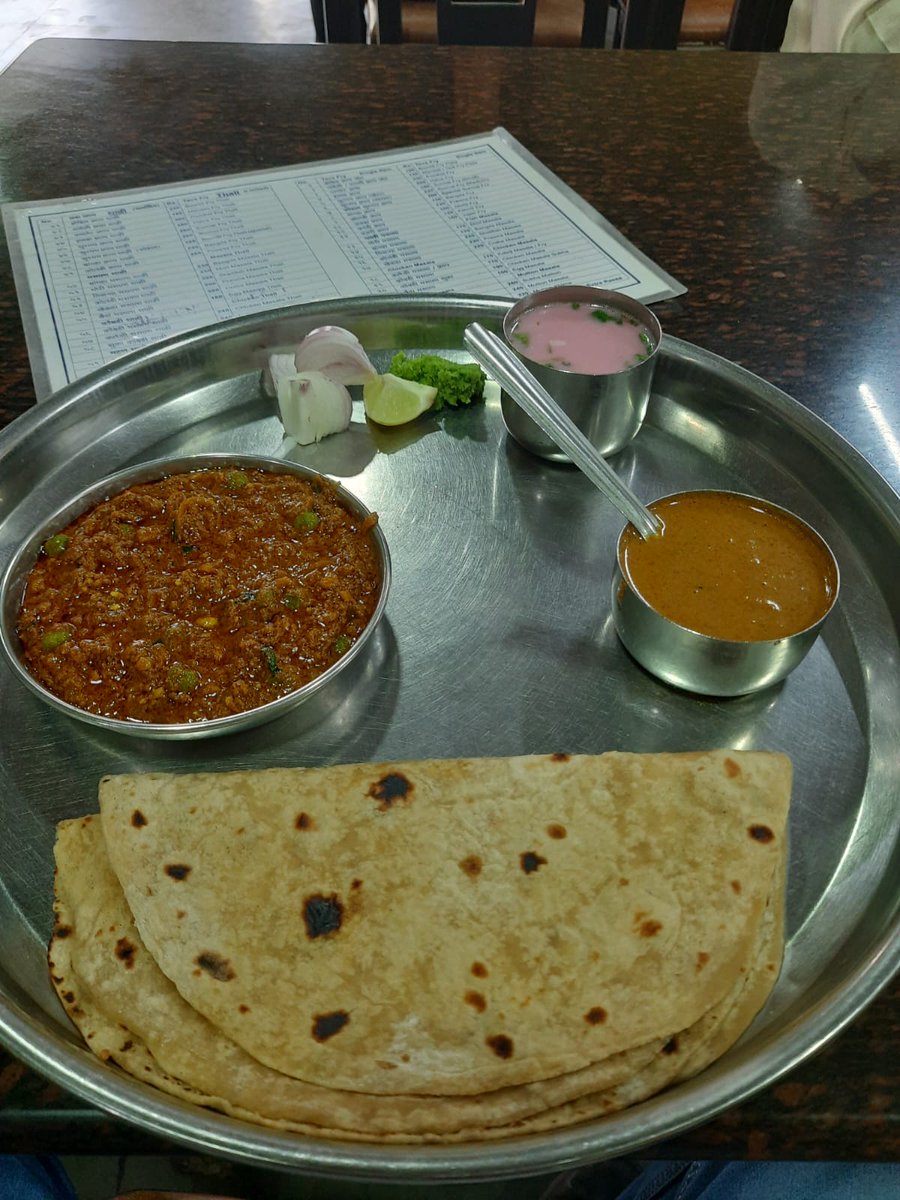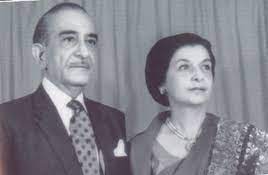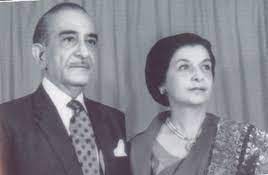On January 30, 1948, Nathuram Godse passed into eternal infamy by firing three fatal shots at Mahatma Gandhi from an automatic 9mm Beretta pistol at the Birla House in Delhi. That Godse and most of the assassination plotters were from Maharashtra has been used to unfairly tarnish the state and its people as being ranged against the Mahatma.
However, these narratives ignore the fact that Gandhi had a complex yet deep association with Maharashtra. His critics, such as Vinayak Damodar Savarkar, who was an accused in the Gandhi assassination case but was acquitted by the trial court, and Dr Babasaheb Ambedkar, hailed from Maharashtra. But so did his mentor Gopal Krishna Gokhale. Gandhi’s staunch followers, such as ‘Acharya’ Vinoba Bhave, who is regarded as his spiritual successor; freedom fighter, author and social reformer Pandurang Sadashiv Sane ‘Guruji’; and Sitaram ‘Appasaheb’ Patwardhan, who was referred to as the ‘Konkan Gandhi’, were also Maharashtrians.
Read on to know more about the deep connect between Mahatma Gandhi, Maharashtra and the Marathi language.
The contribution of Maharashtrians to Gandhi’s struggle in his early days—after arriving in Mumbai from South Africa in January 1915—is also little known. Soon after his return to India, Gandhi contacted his friend from his days in England—barrister Keshav Ganesh Deshpande, who was based in Baroda. It was Deshpande who introduced Gandhi to a teacher, Dattatreya Balkrishna aka Kakasaheb Kalelkar, in what would be the beginning of a life-long association.
Deshpande’s associate Vitthal Lakshman aka Mama Phadke also joined forces with Gandhi. Kedarnath Appaji Kulkarni, a resident of Pali in the erstwhile princely state of Bhor, which straddled the present-day Pune and Raigad districts, also became an associate of Gandhi. The scholar-author Y.D. Phadke says Deshpande, Kalelkar and Kulkarni were being pulled towards the activities of the armed revolutionaries, but took to Gandhi’s path after realising that using violent means would not help the cause of independence.
#MahatmaGandhi #mahatmagandhiji #Gandhi #Gandhiji #NathuramGodse #Maharashtra #Marathi #Pune #Godse #history #heritage

However, these narratives ignore the fact that Gandhi had a complex yet deep association with Maharashtra. His critics, such as Vinayak Damodar Savarkar, who was an accused in the Gandhi assassination case but was acquitted by the trial court, and Dr Babasaheb Ambedkar, hailed from Maharashtra. But so did his mentor Gopal Krishna Gokhale. Gandhi’s staunch followers, such as ‘Acharya’ Vinoba Bhave, who is regarded as his spiritual successor; freedom fighter, author and social reformer Pandurang Sadashiv Sane ‘Guruji’; and Sitaram ‘Appasaheb’ Patwardhan, who was referred to as the ‘Konkan Gandhi’, were also Maharashtrians.
Read on to know more about the deep connect between Mahatma Gandhi, Maharashtra and the Marathi language.
The contribution of Maharashtrians to Gandhi’s struggle in his early days—after arriving in Mumbai from South Africa in January 1915—is also little known. Soon after his return to India, Gandhi contacted his friend from his days in England—barrister Keshav Ganesh Deshpande, who was based in Baroda. It was Deshpande who introduced Gandhi to a teacher, Dattatreya Balkrishna aka Kakasaheb Kalelkar, in what would be the beginning of a life-long association.
Deshpande’s associate Vitthal Lakshman aka Mama Phadke also joined forces with Gandhi. Kedarnath Appaji Kulkarni, a resident of Pali in the erstwhile princely state of Bhor, which straddled the present-day Pune and Raigad districts, also became an associate of Gandhi. The scholar-author Y.D. Phadke says Deshpande, Kalelkar and Kulkarni were being pulled towards the activities of the armed revolutionaries, but took to Gandhi’s path after realising that using violent means would not help the cause of independence.
#MahatmaGandhi #mahatmagandhiji #Gandhi #Gandhiji #NathuramGodse #Maharashtra #Marathi #Pune #Godse #history #heritage


When Gandhi launched his Champaran Satyagraha in Bihar in 1917 against the exploitation of indigo farmers, a Maharashtrian couple, Avantikabai and Baban Gokhale, taught at schools in the area and created awareness among the villagers. Some other Marathis who were associated with Gandhi in this period include Narayan ‘Pundalikji’ Katgade and Shankarrao Deo.
Kalelkar says Gandhi also made efforts to learn Marathi. In South Africa, Gandhi had acquired functional knowledge of Tamil as he had to work among Tamil indentured labourers. He had also learnt Urdu. After returning to India in 1915, he decided to learn Marathi. In December that year, he replied to a letter by an office-bearer of the Servants of India Society, Pune, in Marathi.
The letter from the society was in English. Gandhi would dictate his reply aloud in Gujarati and Kakasaheb Kalelkar would translate it into Marathi. Kalelkar says he asked Gandhi to sign off with the standard line: ‘Lobh asawa hi vinanti’ (May your love or warmth continue). Gandhi interpreted the word ‘lobh’ as greed and replied, “Actually, it should be lobh nasava”. Kalelkar explained that in this particular context, lobh implied love or warmth.
Later, Gandhiji realised that there were Maharashtrian families in his ashram and started reading ‘Manache Shlok’ by Samartha Ramdas Swami in his daily prayer meetings. He could understand spoken Marathi but was unable to attain fluency when it came to speaking the language.
During his interment at the Yerwada Jail in Pune in 1930, Gandhi took the opportunity to polish his Marathi and translated seven abhangs of the Bhakti saint Tukaram from Marathi to English. He was deeply influenced by the poet-saint. In Yerwada Jail, Gandhi asked Kalelkar to teach him Marathi. Kalelkar taught him using textbooks and Gandhi made substantial progress. When it came to handwriting, he was influenced by the references in ‘Dasbodh’, written by Samartha Ramdas, to how it should be.
A narrative, albeit a stilted one, suggests that Gandhi and Lokmanya Bal Gangadhar Tilak, the pre-eminent nationalist leader of that era and the first pan-Indian mass leader, were opposite poles. But Tilak appreciated Gandhi despite any differences and referred to him as a ‘Mahatma’ in his introduction to a biography of Gandhi written by Avantikabai Gokhale in 1918. This is the first biography of Gandhi in Marathi.
After Tilak’s sudden demise in Mumbai on August 1, 1920, Gandhi was among those who shouldered Tilak’s bier, a metaphor for him taking on the Lokmanya’s baton after his demise. An account, the provenance of which may be uncertain, says that when Gandhi tried to touch the vimana (a bamboo chair used for the final journey of saints and religious figures) with Tilak’s mortal coils, a voice from the crowd tried to prevent him from doing so, saying: ‘You are not a Brahmin’. Gandhi stopped, thought for a moment and then replied: ‘Public servants have no caste’. The other bearer of Tilak’s mortal body was Maulana Shaukat Ali, the leader of the Khilafat movement.
That day, Gandhi also returned his ‘Kaiser-E-Hind’ title and launched the Non-Cooperation Movement, indicating that one leader had passed on and another had immediately taken his place.
Tilak had not left a political heir, and attempts by his associates to evolve a collective leadership eventually came to naught. Gandhi gradually cemented his position as the supreme leader of the Congress and broad-based it to include the masses, sought religious reform and emancipation of untouchables. This was resented by some Brahmins, who formed the core of Tilak’s support base. They felt that they were being sidelined. Gandhi’s espousal of non-violence, albeit in a militant form, was looked down upon by those who believed in Tilak’s muscular nationalism.


Kalelkar says Gandhi also made efforts to learn Marathi. In South Africa, Gandhi had acquired functional knowledge of Tamil as he had to work among Tamil indentured labourers. He had also learnt Urdu. After returning to India in 1915, he decided to learn Marathi. In December that year, he replied to a letter by an office-bearer of the Servants of India Society, Pune, in Marathi.
The letter from the society was in English. Gandhi would dictate his reply aloud in Gujarati and Kakasaheb Kalelkar would translate it into Marathi. Kalelkar says he asked Gandhi to sign off with the standard line: ‘Lobh asawa hi vinanti’ (May your love or warmth continue). Gandhi interpreted the word ‘lobh’ as greed and replied, “Actually, it should be lobh nasava”. Kalelkar explained that in this particular context, lobh implied love or warmth.
Later, Gandhiji realised that there were Maharashtrian families in his ashram and started reading ‘Manache Shlok’ by Samartha Ramdas Swami in his daily prayer meetings. He could understand spoken Marathi but was unable to attain fluency when it came to speaking the language.
During his interment at the Yerwada Jail in Pune in 1930, Gandhi took the opportunity to polish his Marathi and translated seven abhangs of the Bhakti saint Tukaram from Marathi to English. He was deeply influenced by the poet-saint. In Yerwada Jail, Gandhi asked Kalelkar to teach him Marathi. Kalelkar taught him using textbooks and Gandhi made substantial progress. When it came to handwriting, he was influenced by the references in ‘Dasbodh’, written by Samartha Ramdas, to how it should be.
A narrative, albeit a stilted one, suggests that Gandhi and Lokmanya Bal Gangadhar Tilak, the pre-eminent nationalist leader of that era and the first pan-Indian mass leader, were opposite poles. But Tilak appreciated Gandhi despite any differences and referred to him as a ‘Mahatma’ in his introduction to a biography of Gandhi written by Avantikabai Gokhale in 1918. This is the first biography of Gandhi in Marathi.
After Tilak’s sudden demise in Mumbai on August 1, 1920, Gandhi was among those who shouldered Tilak’s bier, a metaphor for him taking on the Lokmanya’s baton after his demise. An account, the provenance of which may be uncertain, says that when Gandhi tried to touch the vimana (a bamboo chair used for the final journey of saints and religious figures) with Tilak’s mortal coils, a voice from the crowd tried to prevent him from doing so, saying: ‘You are not a Brahmin’. Gandhi stopped, thought for a moment and then replied: ‘Public servants have no caste’. The other bearer of Tilak’s mortal body was Maulana Shaukat Ali, the leader of the Khilafat movement.
That day, Gandhi also returned his ‘Kaiser-E-Hind’ title and launched the Non-Cooperation Movement, indicating that one leader had passed on and another had immediately taken his place.
Tilak had not left a political heir, and attempts by his associates to evolve a collective leadership eventually came to naught. Gandhi gradually cemented his position as the supreme leader of the Congress and broad-based it to include the masses, sought religious reform and emancipation of untouchables. This was resented by some Brahmins, who formed the core of Tilak’s support base. They felt that they were being sidelined. Gandhi’s espousal of non-violence, albeit in a militant form, was looked down upon by those who believed in Tilak’s muscular nationalism.



As sociologist Ashis Nandy notes, Gandhi worked to simultaneously subvert the Brahmanic and Kshatriya orthodoxy and the British colonial system. He threatened to alter the basic characteristics of Indian society by making its cultural periphery its centre, which went against upper-caste interests.
Though many Tilakites, such as Kakasaheb Khadilkar, accepted Gandhi’s leadership, some others like B.S. Moonje and N.C. Kelkar held out and were contemptuous of the Mahatma’s ways. The growing communal cleavage between Hindus and Muslims and the emergence of Savarkar’s leadership in the late 1930s added grist to this sentiment. The general opinion of the Tilakites towards Gandhi can perhaps be summed by the comment of Tilak’s guru ‘Brahmarshi’ Annasaheb Patwardhan: “Changla, parantu akheris shamloch.” (Good man, but eventually a wimp).
In the 1930s, the social alliance between Congress leader N.V. ‘Kakasaheb’ Gadgil and Keshavrao Jedhe, a doyen of the non-Brahmin movement, ensured that the non-Brahmins and adherents of the Satyashodhak movement in Maharashtra joined the Congress in large numbers. This social alliance between Brahmins and non-Brahmins is referred to as the Jedhe-Gadgil pact. Gandhi’s non-Brahmin (Modh Baniya) origins may have played a significant part in attracting the non-Brahmins and the Marathas to the Congress. This helped the non-Brahmins overcome their scepticism of Brahmin politicians. The Bahujans gradually became the backbone of the Congress in Maharashtra. It was in this decade that the Congress achieved the status of a mass-based party in the state.
Gandhi’s leadership and the growing presence of non-Brahmins in the Congress, coupled with the parallel growth of organisations like the Hindu Mahasabha, Democratic Swaraj Party and the Rashtriya Swayamsevak Sangh, gradually estranged a section of Brahmins from the Congress. This, coupled with the gradual and systemic indoctrination of young minds towards right-wing ideologies and against Gandhi's creed and the rising riding of communal violence during the Partition era, laid the seeds of Godse’s infamous act in 1948.
Though many Tilakites, such as Kakasaheb Khadilkar, accepted Gandhi’s leadership, some others like B.S. Moonje and N.C. Kelkar held out and were contemptuous of the Mahatma’s ways. The growing communal cleavage between Hindus and Muslims and the emergence of Savarkar’s leadership in the late 1930s added grist to this sentiment. The general opinion of the Tilakites towards Gandhi can perhaps be summed by the comment of Tilak’s guru ‘Brahmarshi’ Annasaheb Patwardhan: “Changla, parantu akheris shamloch.” (Good man, but eventually a wimp).
In the 1930s, the social alliance between Congress leader N.V. ‘Kakasaheb’ Gadgil and Keshavrao Jedhe, a doyen of the non-Brahmin movement, ensured that the non-Brahmins and adherents of the Satyashodhak movement in Maharashtra joined the Congress in large numbers. This social alliance between Brahmins and non-Brahmins is referred to as the Jedhe-Gadgil pact. Gandhi’s non-Brahmin (Modh Baniya) origins may have played a significant part in attracting the non-Brahmins and the Marathas to the Congress. This helped the non-Brahmins overcome their scepticism of Brahmin politicians. The Bahujans gradually became the backbone of the Congress in Maharashtra. It was in this decade that the Congress achieved the status of a mass-based party in the state.
Gandhi’s leadership and the growing presence of non-Brahmins in the Congress, coupled with the parallel growth of organisations like the Hindu Mahasabha, Democratic Swaraj Party and the Rashtriya Swayamsevak Sangh, gradually estranged a section of Brahmins from the Congress. This, coupled with the gradual and systemic indoctrination of young minds towards right-wing ideologies and against Gandhi's creed and the rising riding of communal violence during the Partition era, laid the seeds of Godse’s infamous act in 1948.

• • •
Missing some Tweet in this thread? You can try to
force a refresh


















